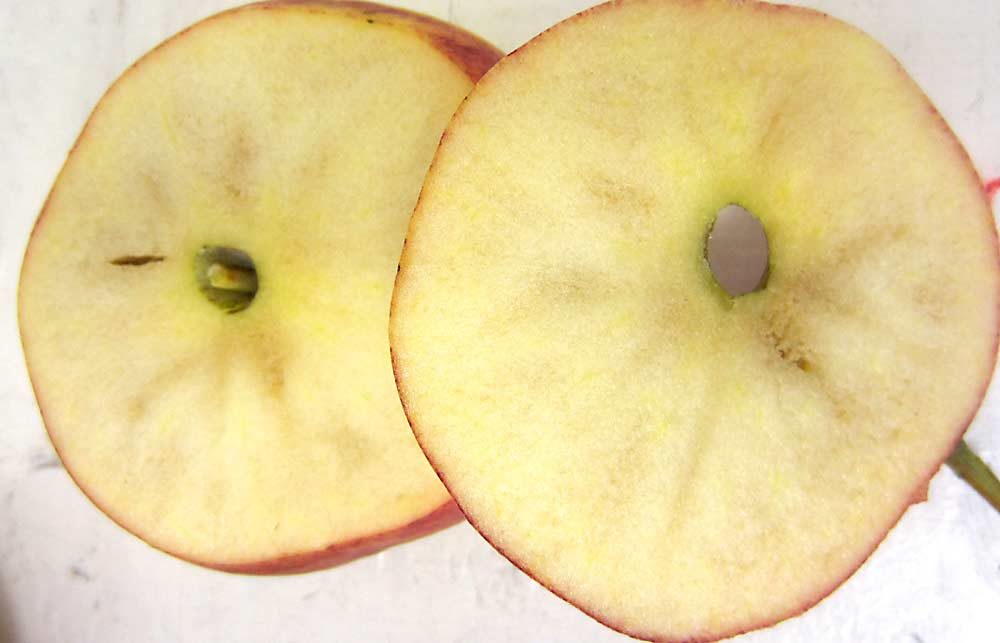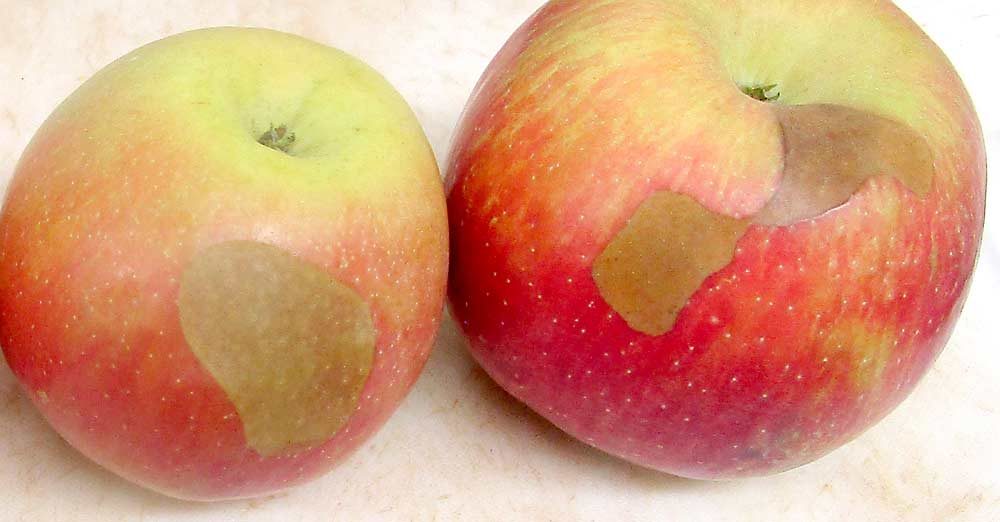Storage regimes are increasingly tailored to individual varieties, and two of the most popular apple cultivars, Gala and Honeycrisp, pose some of the most difficult postharvest challenges.

Jennifer DeEll, a fresh-market horticultural specialist with the Ontario Ministry of Agriculture, Food and Rural Affairs, discussed postharvest storage disorders of Gala and Honeycrisp during the 2019 Fruit, Vegetable & Farm Market EXPO in Grand Rapids, Michigan, in December.
Gala
Internal browning poses storage risks for Gala. According to DeEll, the first sign of internal browning in a Gala apple is flesh browning near the stem end, or shoulder, which then progresses toward the calyx.
Many factors influence internal browning, including the orchard itself, fruit maturity at harvest, postharvest treatments and storage conditions and duration, DeEll said.
In general, the later a Gala is harvested and the longer it is held in storage, the greater the chances its flesh turns brown. DeEll’s research has shown that Gala held in standard controlled atmosphere (CA) conditions shows little internal browning through five months of storage, but that browning increases significantly after that. And browning accelerates quickly if the apple is held at room temperature after removal from CA storage.

Application of 1-MCP, the plant growth regulator that slows down fruit ripening, has not shown a consistent effect on internal browning in Gala. Some studies found that apples treated with 1-MCP have had a lower incidence of browning, both in air and CA storage, while other studies found increases in browning or no change at all, DeEll said.
To further complicate matters, the disorder develops inconsistently, even in apples from the same orchard or block. Location on a hill can make a big difference. Gala picked from the bottom of a hill have consistently shown more internal browning than Gala picked from the top of a hill. The difference might have something to do with variations in temperature or nutrition, she said.
Advanced maturity also plays a role. Harvesting Gala late can contribute to the incidence of internal browning — though some newer strains have proven less susceptible. Other research shows that rapid cooling might contribute: Cooling to 3 degrees Celsius (37.4 degrees Fahrenheit) within 24 hours resulted in more internal browning in Gala than slower cooling over a seven-day period, DeEll said.
To reduce internal browning of Gala in storage, the less oxygen the better. She recommended low-oxygen (1 to 2 percent) or dynamic CA (less than 1 percent oxygen) in storage to reduce development of the disorder.
Honeycrisp
Honeycrisp is known as a difficult apple to store.
To maximize storage life and quality, Honeycrisp apples should be harvested at proper fruit maturity. The tough part, however, is determining proper fruit maturity. Standard measures of maturity — internal ethylene concentration, starch index, soluble solids concentration and fruit firmness — don’t perform consistently in Honeycrisp. Varying levels of red color do not necessarily reflect differences in maturity, either. Brilliantly red fruit can exhibit similar internal ethylene concentrations, starch content and firmness as fruit with poor red coloration, DeEll said.

Honeycrisp harvested too early will not develop good flavor or quality characteristics. Honeycrisp harvested too late will develop undesirable flavors and be more prone to storage disorders such as soft scald and soggy breakdown. To combat these chilling-related disorders, DeEll recommended conditioning the apples at 10 degrees C for one week prior to cold storage. Conditioning above that can reduce acidity levels, but also promote bitter pit. Conditioning right at 10 degrees C (50 degrees F) strikes a balance between developing bitter pit or chilling-related disorders.
Preharvest application of 1-MCP on Honeycrisp can significantly reduce soft scald development, but much depends on spray rate and application timing. Postharvest application of 1-MCP can reduce ethylene production, respiration and peel greasiness. It’s slightly more effective when applied at the onset of the conditioning period, DeEll said. •
—by Matt Milkovich






Leave A Comment